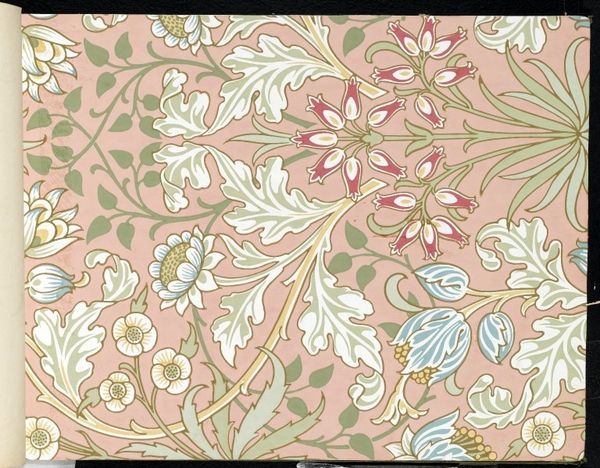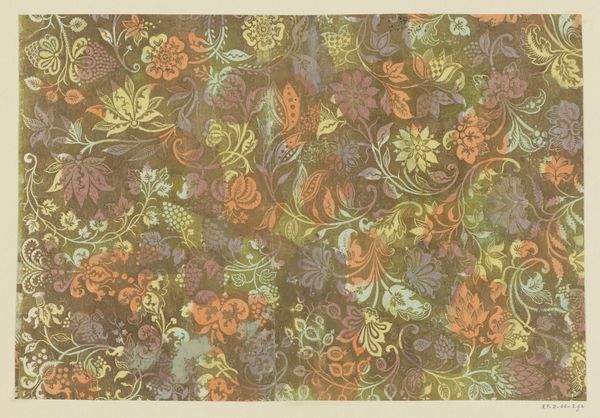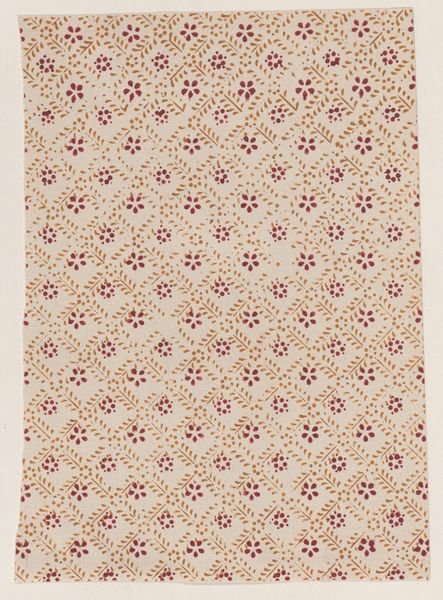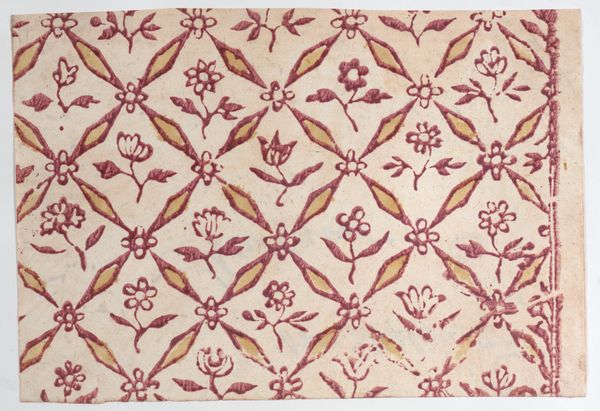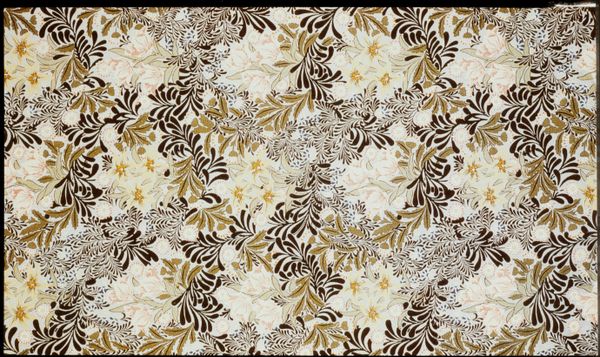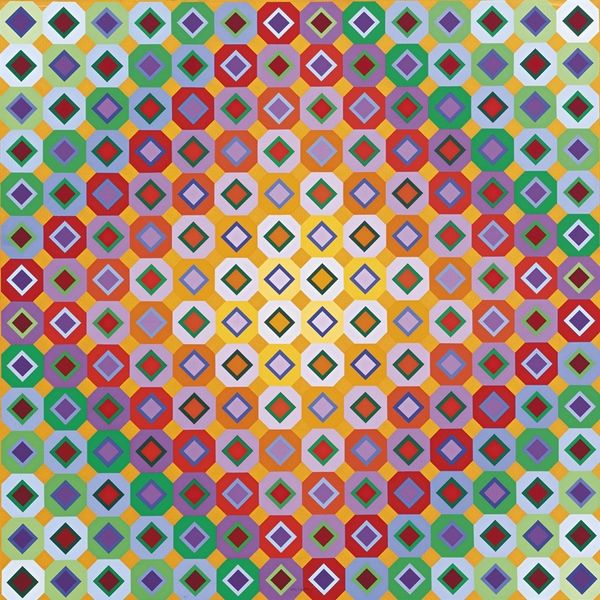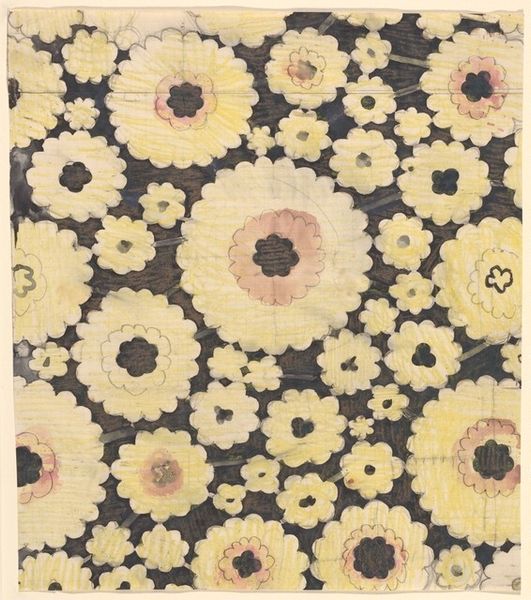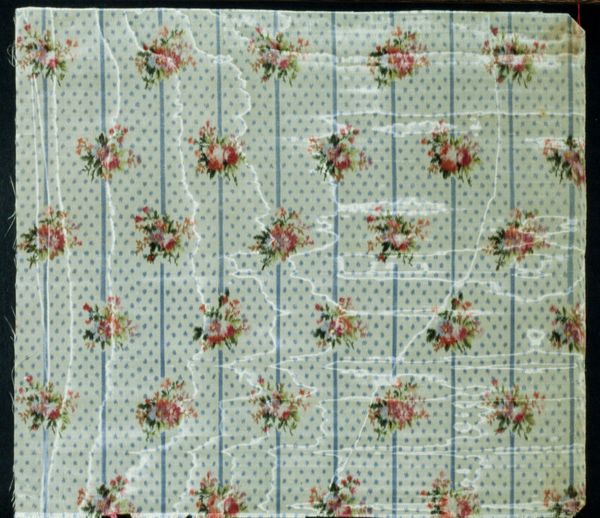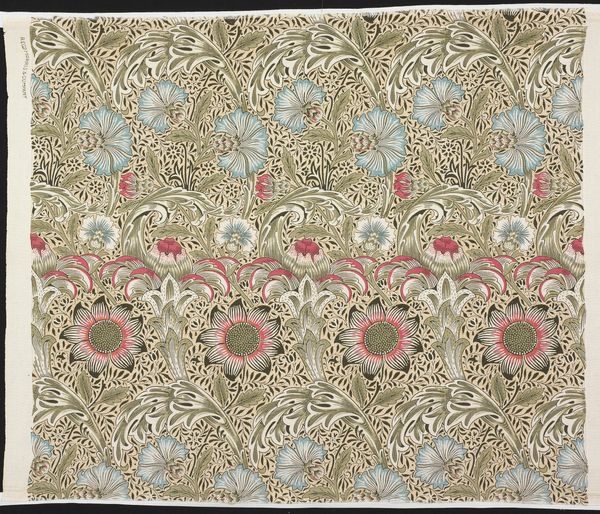
#
pattern-and-decoration
#
naturalistic pattern
#
pattern design
#
abstract pattern
#
organic pattern
#
geometric
#
repetition of pattern
#
vertical pattern
#
abstraction
#
pattern repetition
#
textile design
#
layered pattern
#
pattern work
Copyright: Joyce Kozloff,Fair Use
Art or craft? According to the American artist Joyce Kozloff (b. 1942), there shouldn’t be a distinction. This lithograph (or print on a flat surface) was created in 1979, and consists of Chinese silk backed with rice paper. It features circular bursts of flowers against a mustard yellow background. Kozloff titled the piece ‘Is It Still High Art?’ – here, she makes a strong statement against the historical undervaluing of decorative arts. The combination of naturalistic floral motifs and pastel shades of colour builds an impression of serenity and calm. The work definitely reminds me of ceramic tiles or wallpaper. Yet the busy repeating hexagonal pattern is almost dizzying! The use of silk is also striking – can you imagine the soft feel of the material? According to Kozloff, the decorative arts have traditionally been seen as ‘women’s work’. By breaking the divide between high and low art forms, Kozloff intended to address the history of misogyny and cultural bias in the art world. The artist was a key figure in two major art movements of the late 20th century: Feminism and P&D (Pattern and Decoration). ‘Is It Still High Art’ (1979) effectively combines these two styles! Like many of Kozloff’s works, this print is huge in size. She often uses a large scale, which allows her art to reach a wide public audience. As an artist, Joyce Kozloff embraces history and social engagement. She actively encourages us to rethink our attitudes towards art, gender, and traditional values. Art for change!
Comments
No comments
Be the first to comment and join the conversation on the ultimate creative platform.



